Just when summer’s music fades, a new chorus begins. Fall migration transforms Illinois into a crossroads of wings, where juncos, owls, and cranes all share the same sky.
They come chasing food, warmth, or instinct older than time itself. From backyard feeders to prairie skies, each arrival marks another chapter in nature’s cold-weather story—proof that beauty doesn’t fly south, it just changes feathers.
🐦 1. Dark-eyed Junco (“Snowbird”)
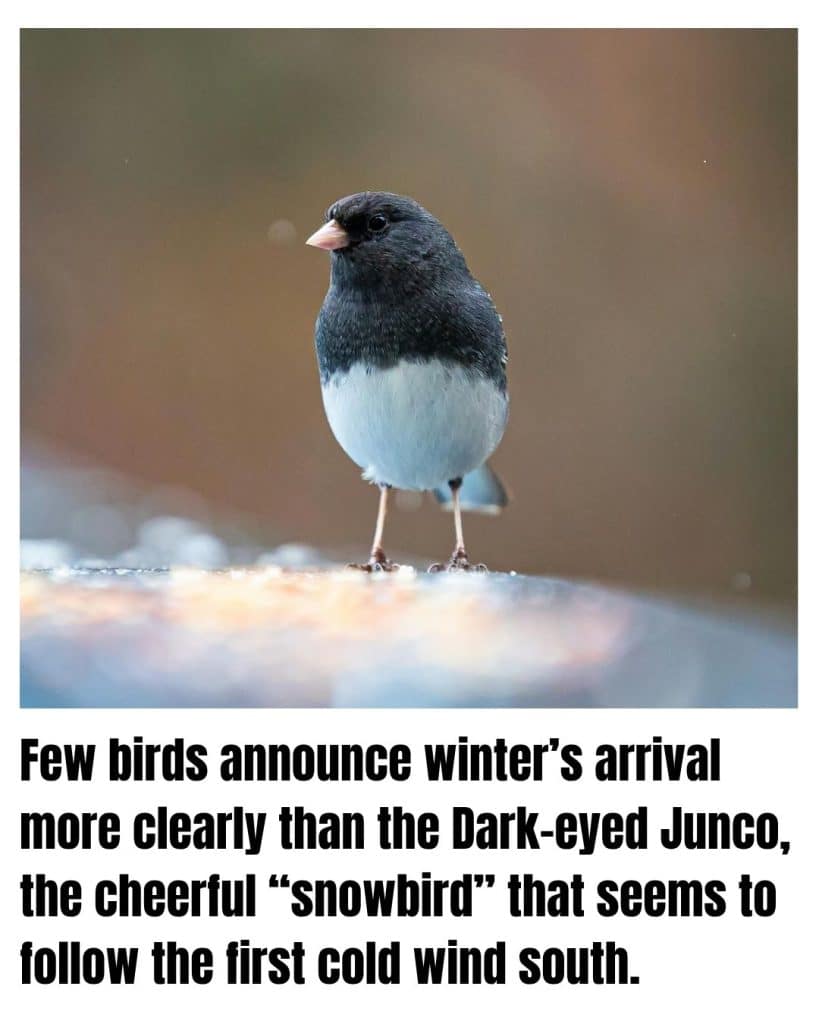
- When they show up: Late September to November
- Where they come from: Canada and Alaska
- Where they go: All across Illinois
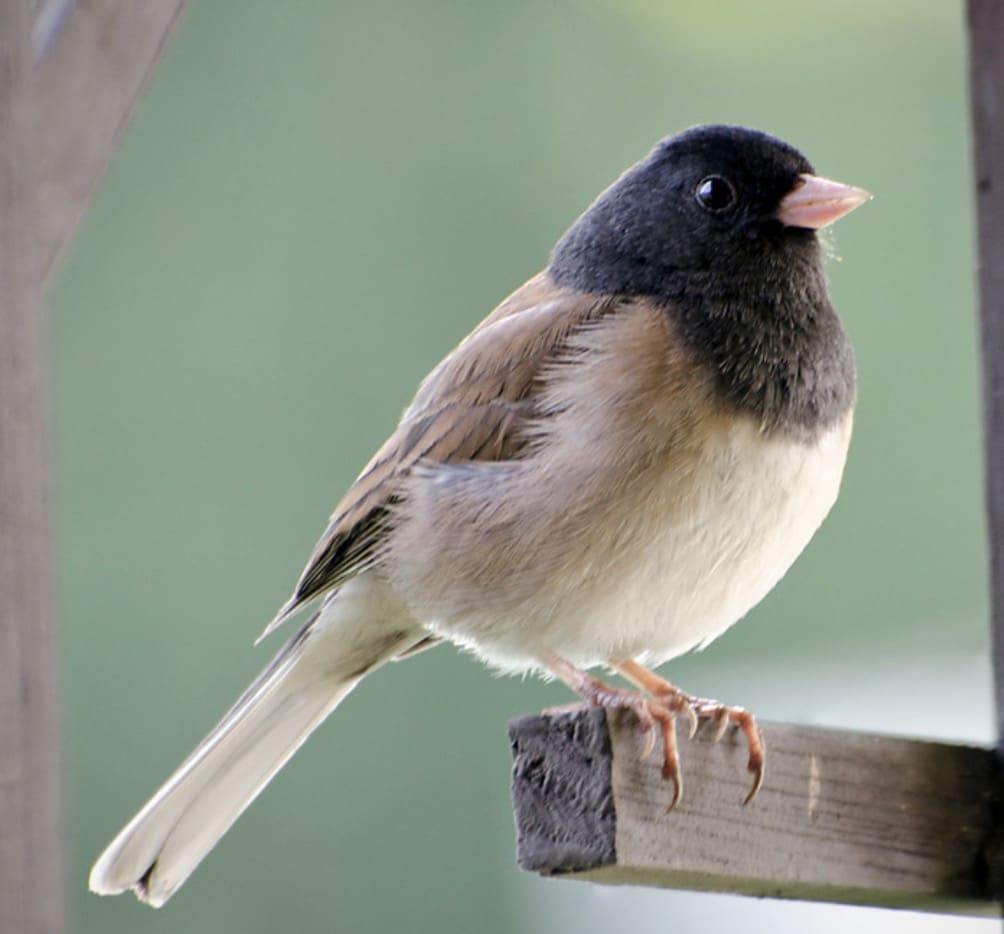
These slate-gray sparrows appear as if summoned by frost, hopping like wind-up toys beneath backyard feeders and flicking their white-edged tails with every movement.
While other birds flee south, the junco embraces the cold, feeding on millet, cracked corn, and seeds scattered across snowy ground.
They thrive in what drives others away, turning even the bleakest Illinois landscape into a lively winter scene.
🕊️ 2. White-throated Sparrow
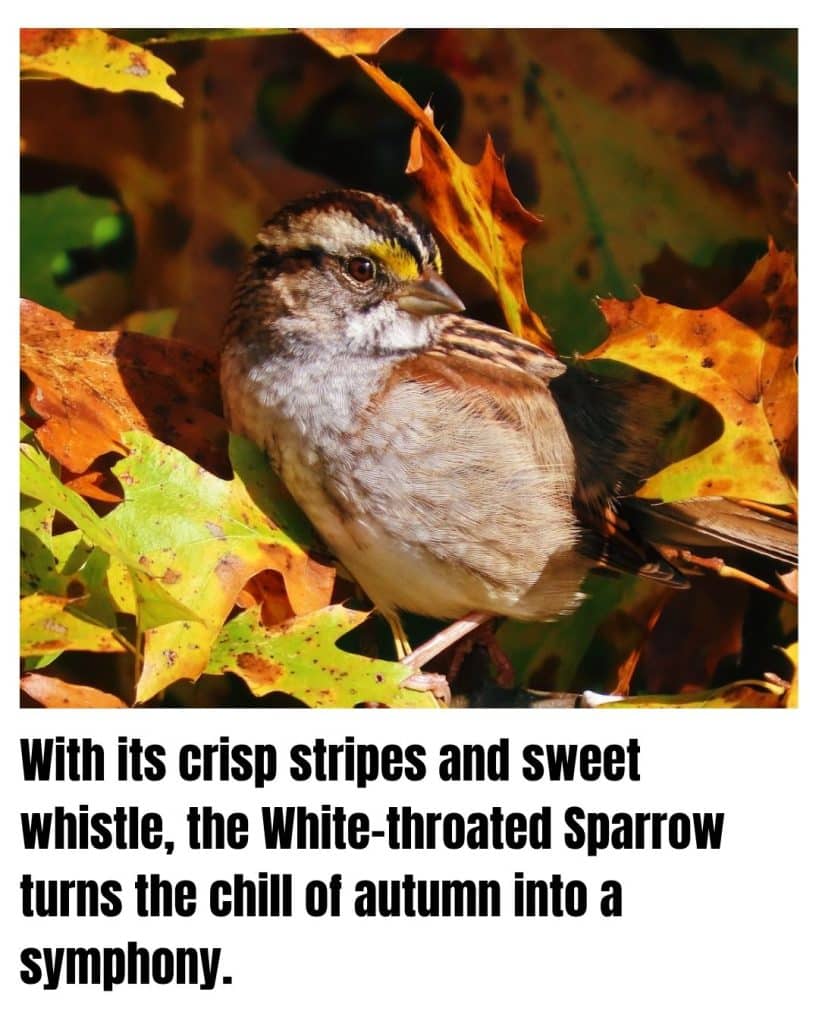
- When they show up: October
- Where they come from: Boreal forests of Canada
- Where they go: Wooded edges, backyards, and parks across Illinois
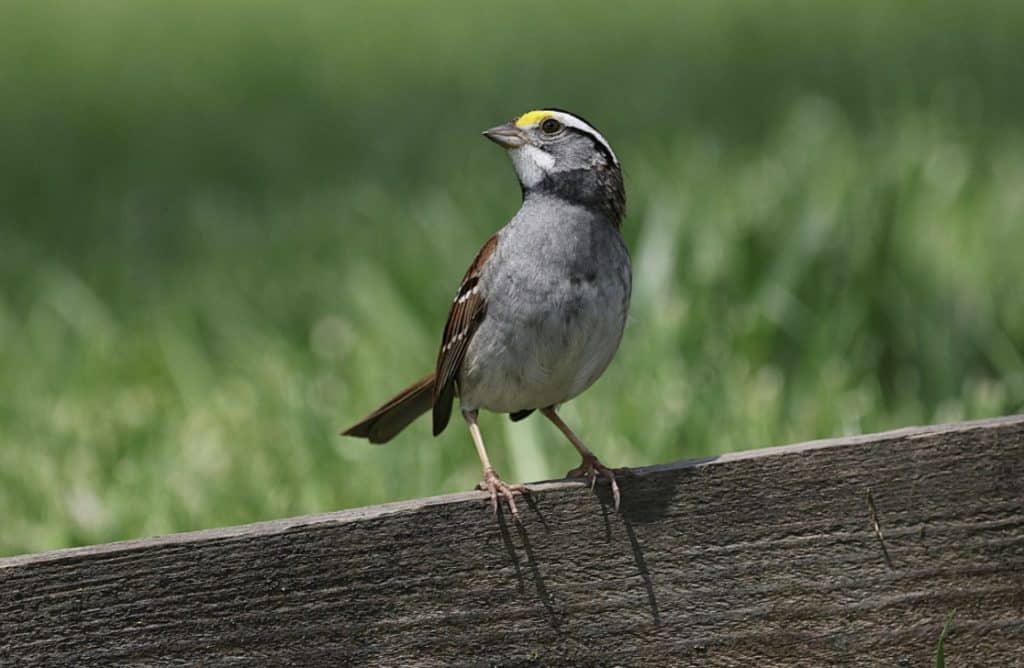
As the leaves fall, these handsome birds sweep into Illinois in flocks, scratching through leaf litter like tiny chickens.
Their bright white throats and golden “eyebrows” catch the low sun, while their familiar “Oh-sweet-Canada” song lingers long after summer’s birds have gone silent.
Though they seem dainty, they’re hardy travelers, weathering sleet and frost with calm endurance at backyard feeders.
🌾 3. American Tree Sparrow
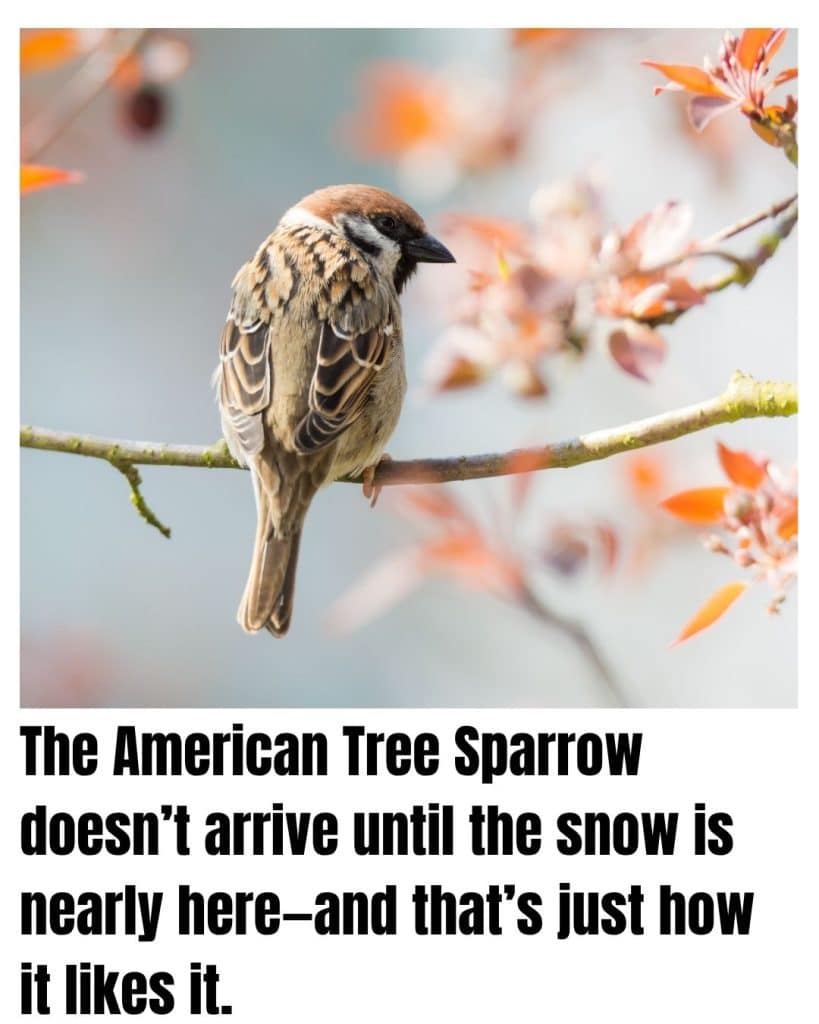
- When they show up: Late October through December
- Where they come from: Arctic tundra and far northern Canada
- Where they go: Open fields and brushy lots across Illinois
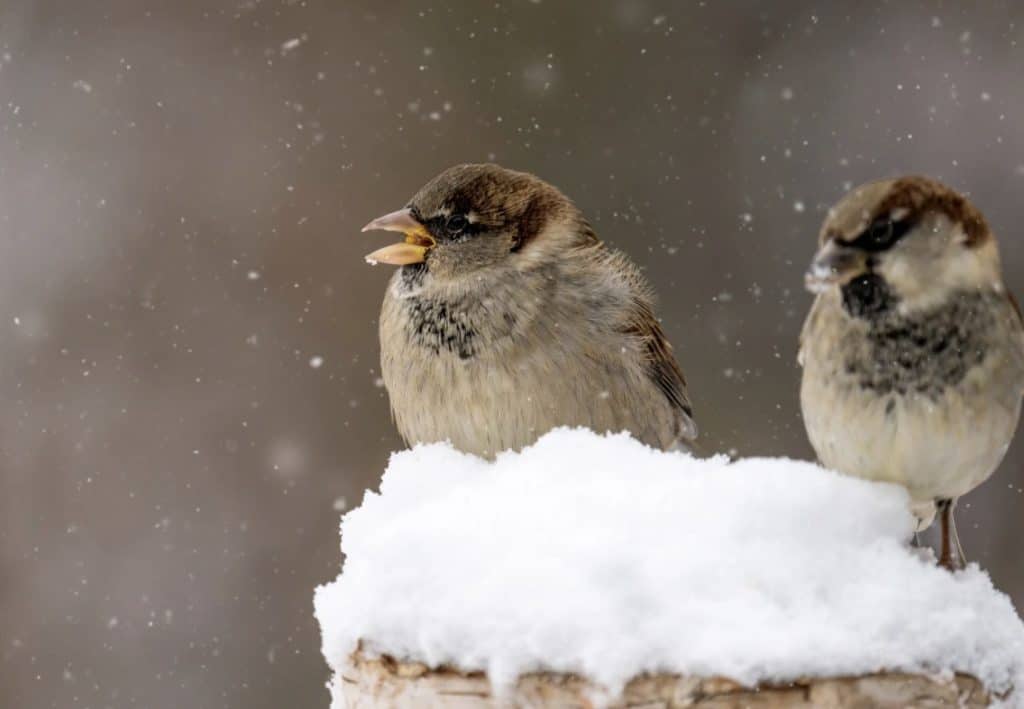
These small, buff-breasted sparrows fly thousands of miles from the frozen tundra to make Illinois their winter home.
They seem to relish the cold, forming loose flocks that bob through weedy fields and thickets, flicking their tails as they feed.
Their rusty caps and tiny black chest spots make them easy to spot against pale winter grass. When they appear, real winter has arrived.
🐤 4. White-crowned Sparrow
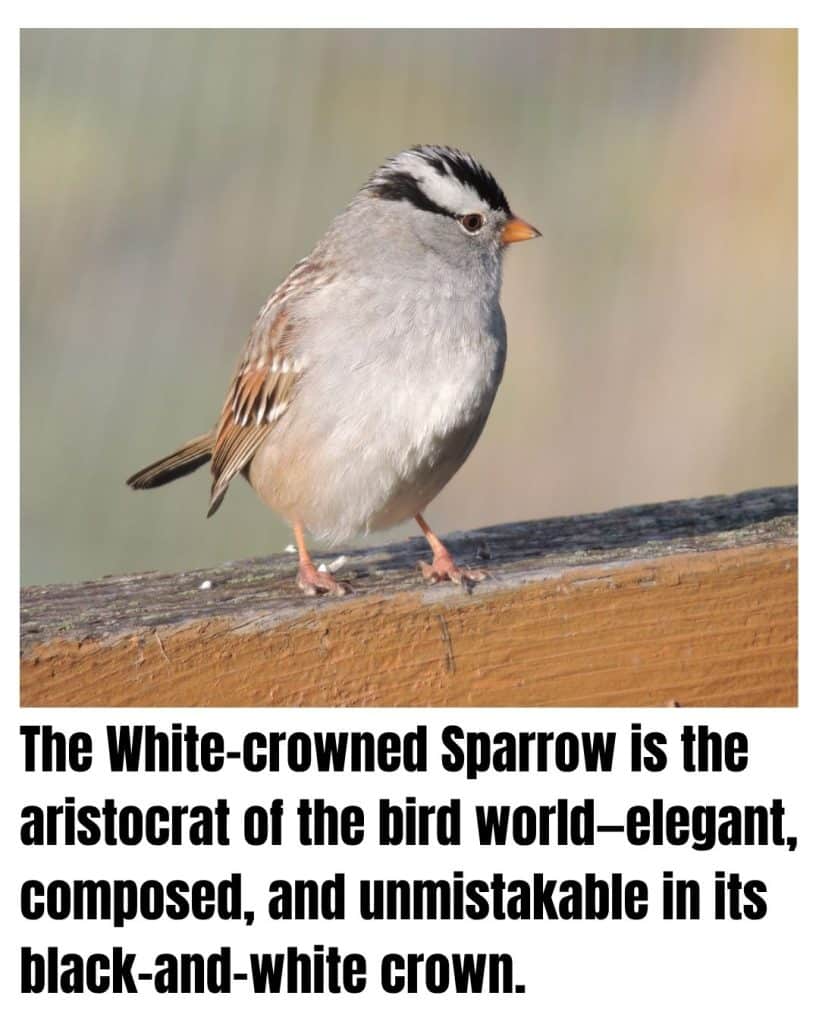
- When they show up: September through November
- Where they come from: Northern U.S. and Canada
- Where they go: Hedgerows, fencerows, and backyard feeders
These migrants glide quietly into Illinois each fall, feeding methodically on seeds along fencerows and brush piles.
Their crisp markings and calm demeanor make them seem regal compared to their rowdier cousins. Juveniles sport warm brown stripes instead of white, like princes not yet crowned.
Most move farther south by midwinter, but for a few weeks, they lend Illinois a touch of northern nobility.
🍁 5. Fox Sparrow
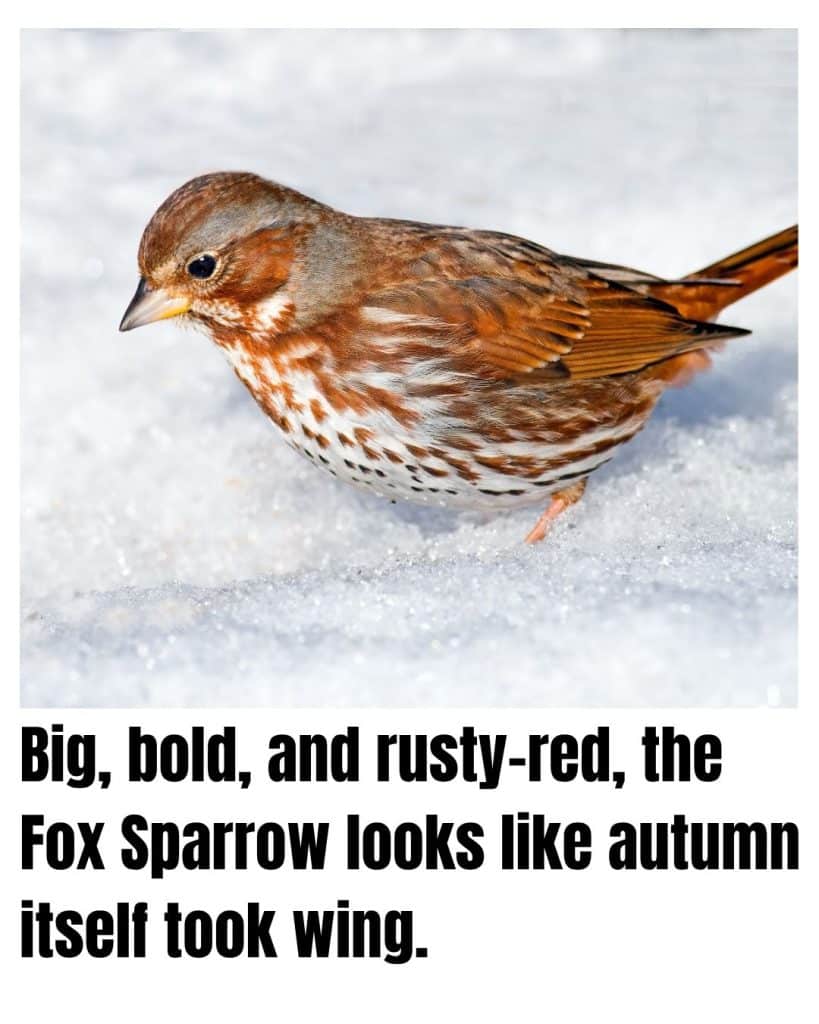
- When they show up: October through November
- Where they come from: Northern forests and Canada
- Where they go: Leaf piles and forest edges
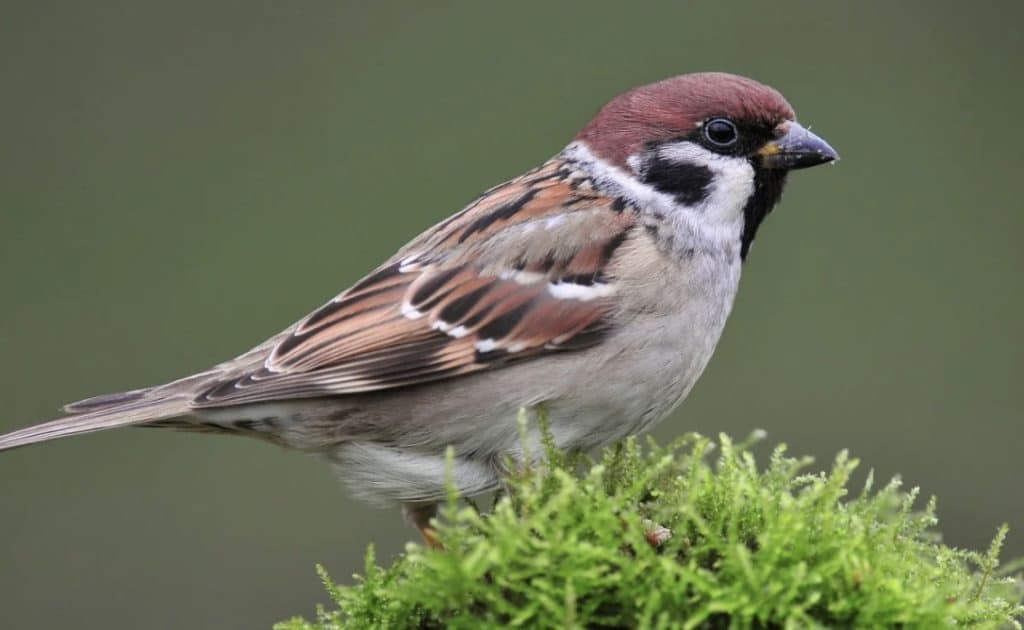
These chunky sparrows migrate south on the heels of the last maple leaves, scattering leaf litter with powerful kicks as they dig for insects and seeds.
Their rich, foxy coloring glows against the browns of fallen foliage, and their loud scratching can be heard long before you spot them.
Though they only pause briefly in Illinois, their visit is one of fall’s most vivid rewards for watchful eyes.
🌲 6. Yellow-rumped Warbler
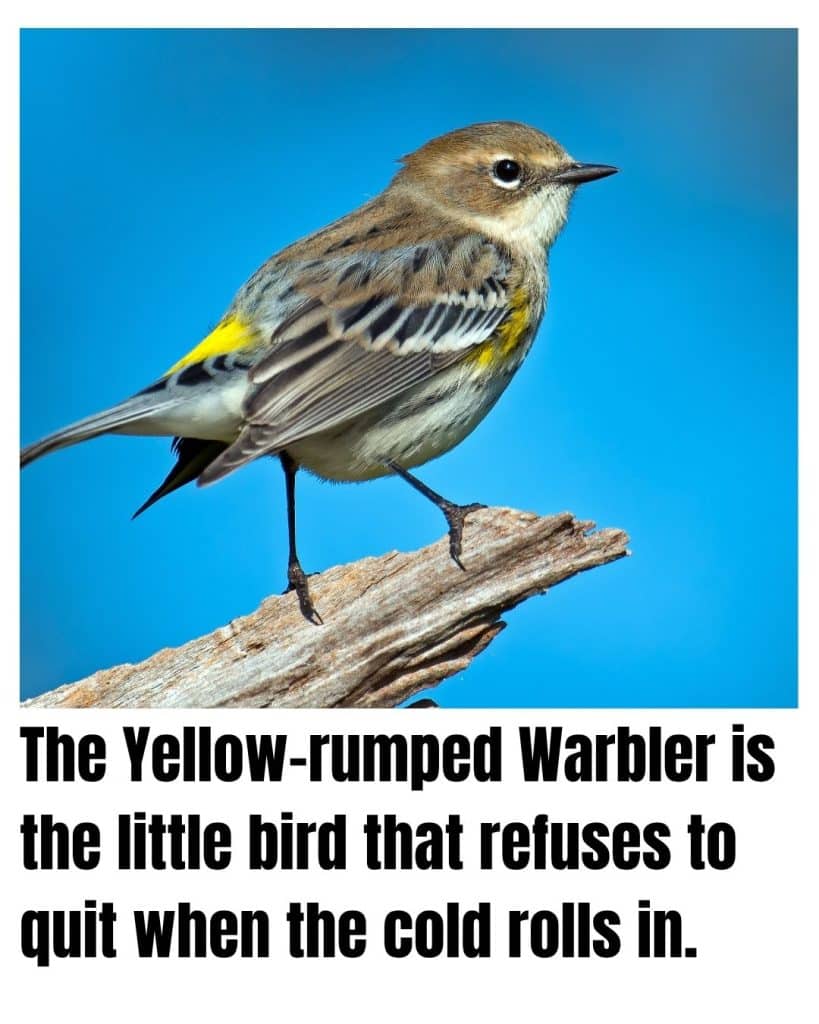
- When they show up: September and October
- Where they come from: Canada and northern U.S.
- Where they go: Southern Illinois and Gulf Coast states
While most warblers vanish to the tropics, these hardy travelers stick around to feast on berries and suet.
They flit through tree lines and backyards, flashing the bright yellow “butterbutt” patch that gives them away.
Their sharp chip calls echo through chilly mornings as they dart between branches, living proof that not all color drains from Illinois when winter approaches.
🐦 7. Hermit Thrush
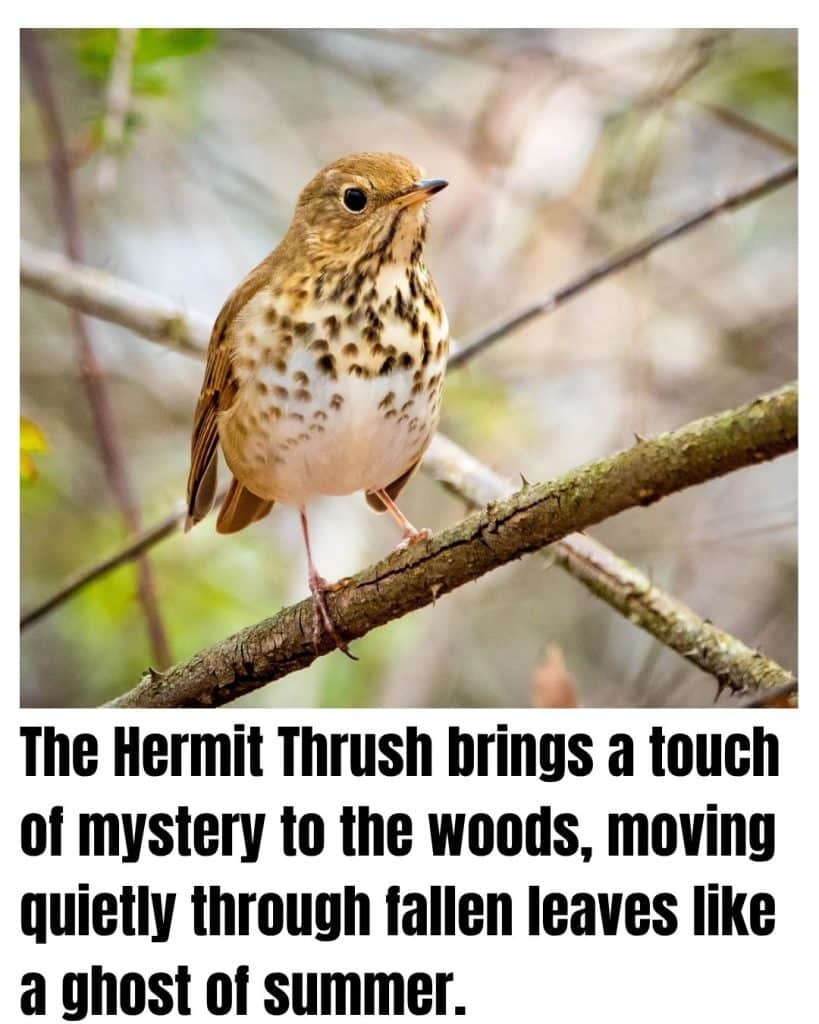
- When they show up: October
- Where they come from: Northern conifer forests
- Where they go: Woodlands and shaded yards
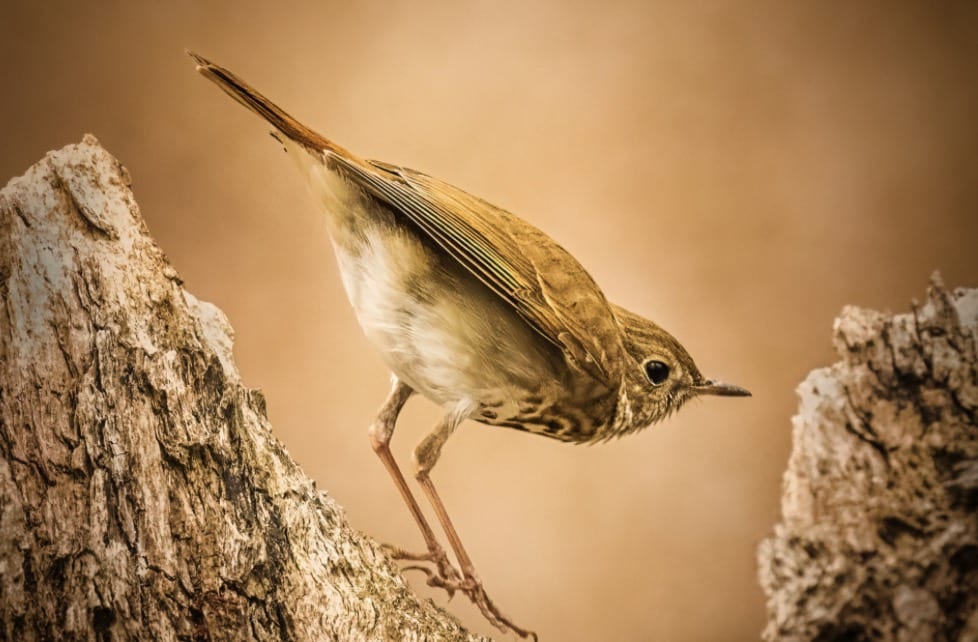
They appear when most songbirds have fled, their gentle, flute-like song fading into autumn’s stillness.
With a rusty tail that flicks nervously and warm brown plumage blending perfectly into forest understory, they’re more heard than seen.
Some linger in southern Illinois all winter, surviving on berries and hidden insects, proof that beauty can be soft-spoken and subtle.
🪶 8. Red-breasted Nuthatch
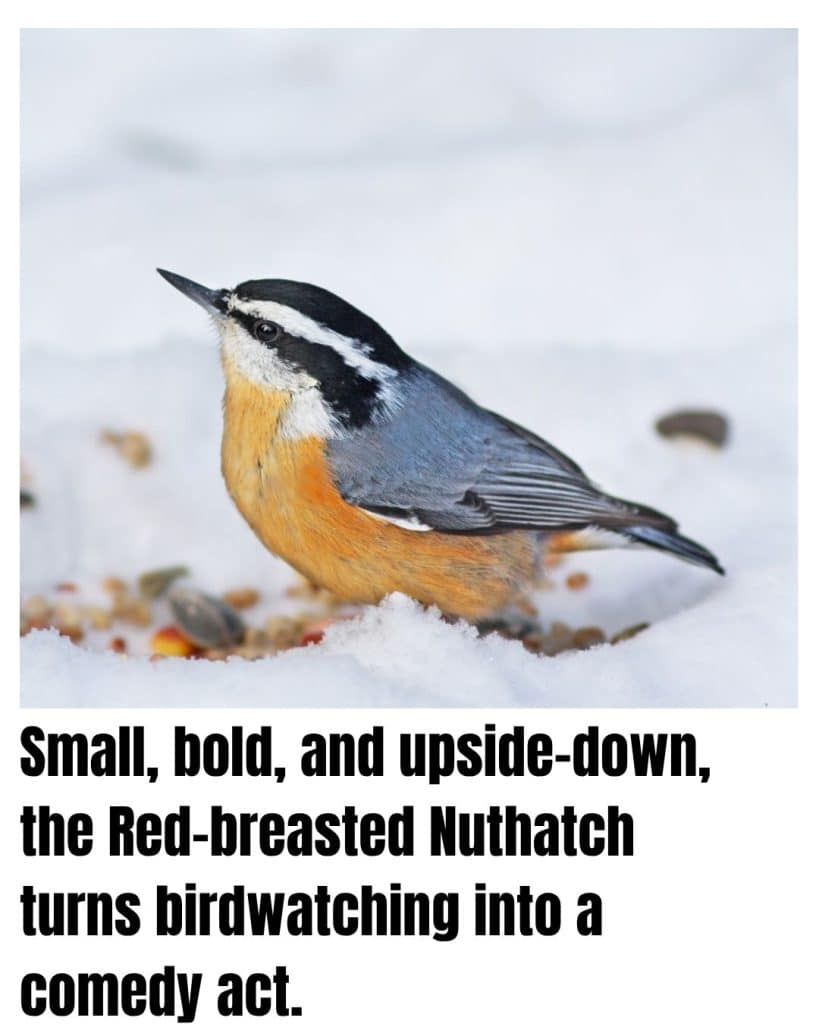
- When they show up: Late September to November
- Where they come from: Boreal Canada and northern U.S.
- Where they go: Pine groves and feeders with suet or peanuts
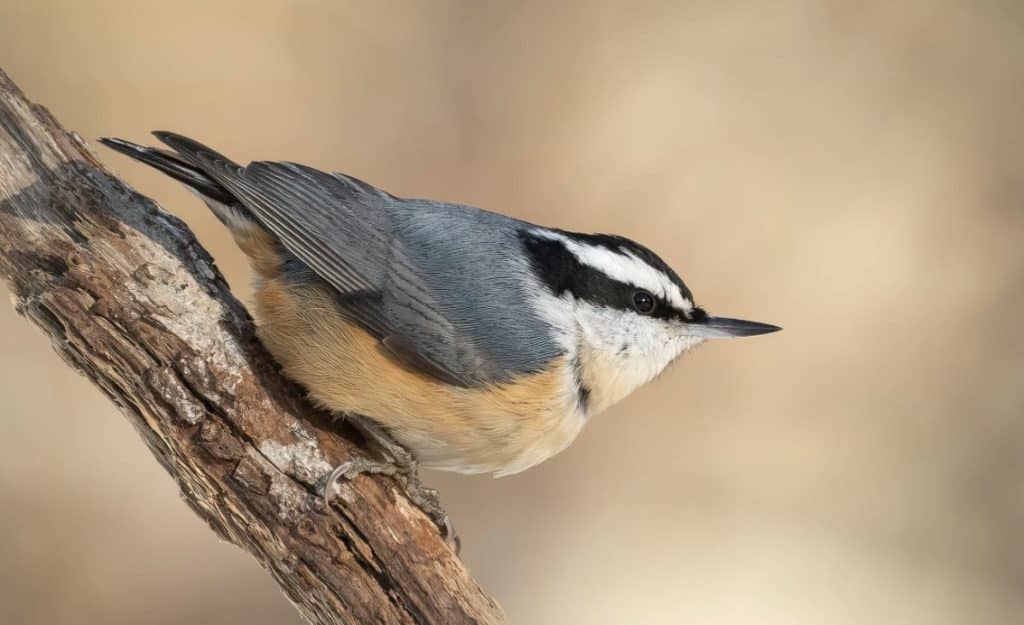
They spiral down tree trunks headfirst, chattering like tiny tin soldiers with nasal little voices. In “irruption years,” when pine cone crops fail up north, thousands flood into Illinois, delighting backyard birders.
Their chestnut bellies and quick movements bring life to evergreens when the forest goes still. Few birds pack more personality into such a small package.
🦆 9. Northern Pintail
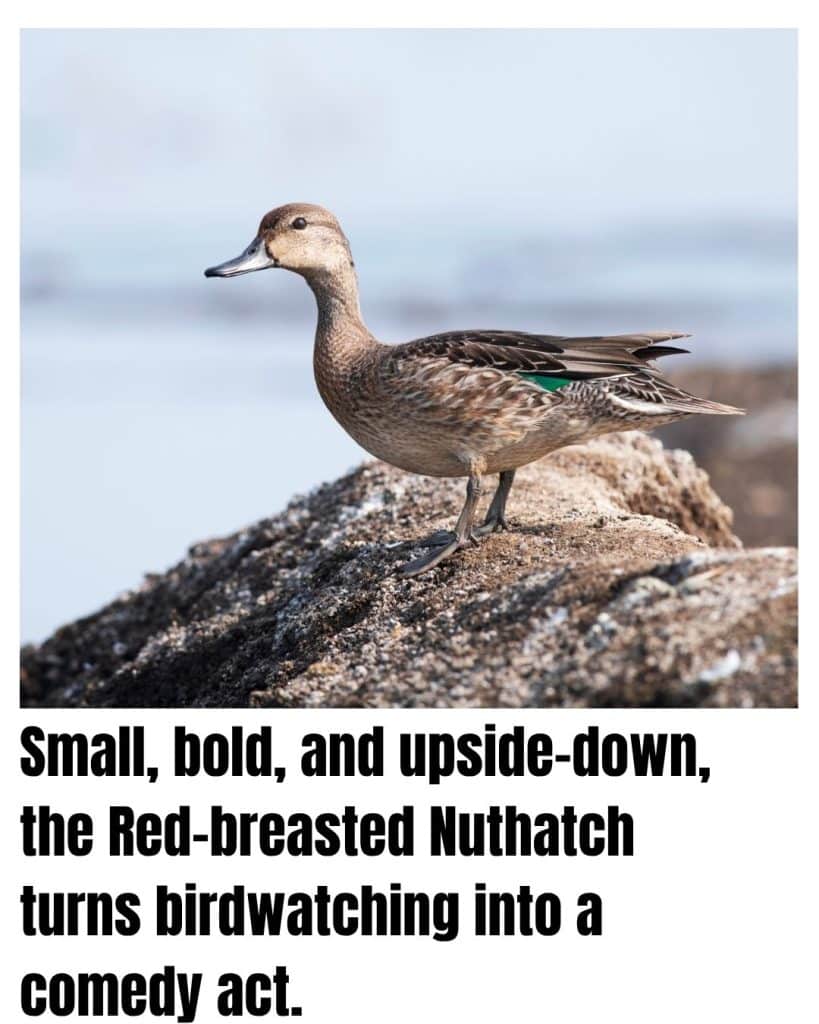
- When they show up: September through November
- Where they come from: Prairie Pothole Region and Alaska
- Where they go: Illinois wetlands and flooded fields
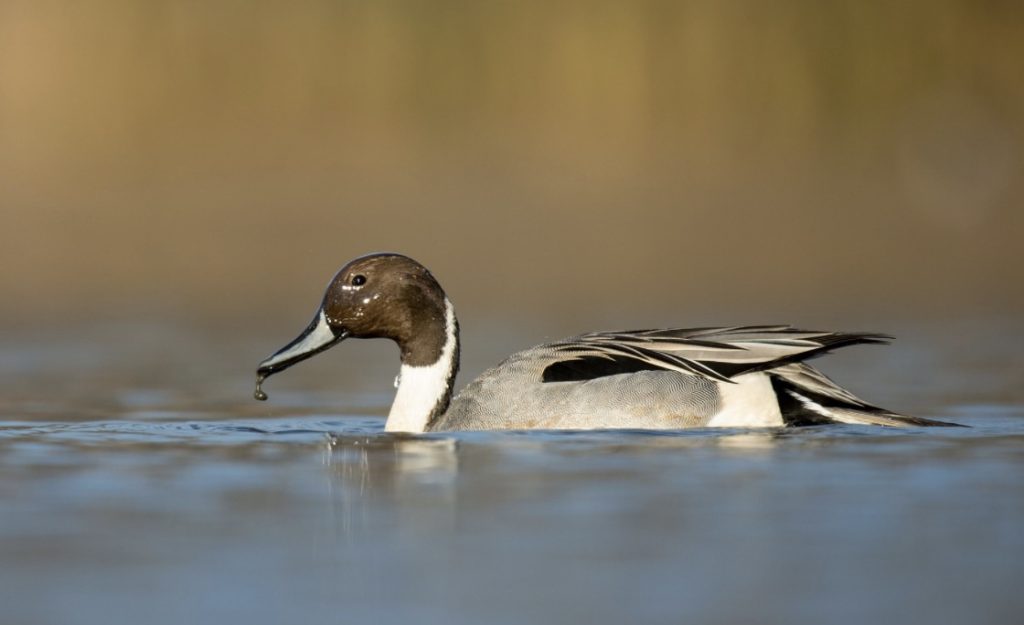
These sleek ducks with chocolate heads and slender tails arrive in graceful flocks that settle quietly into Illinois marshes.
They’re early migrants, moving ahead of freezing weather, feeding on leftover grain and aquatic plants.
Hunters and birders alike admire their beauty—few waterfowl cut a sharper silhouette against the fading orange sky of a fall evening.
🦢 10. Trumpeter Swan
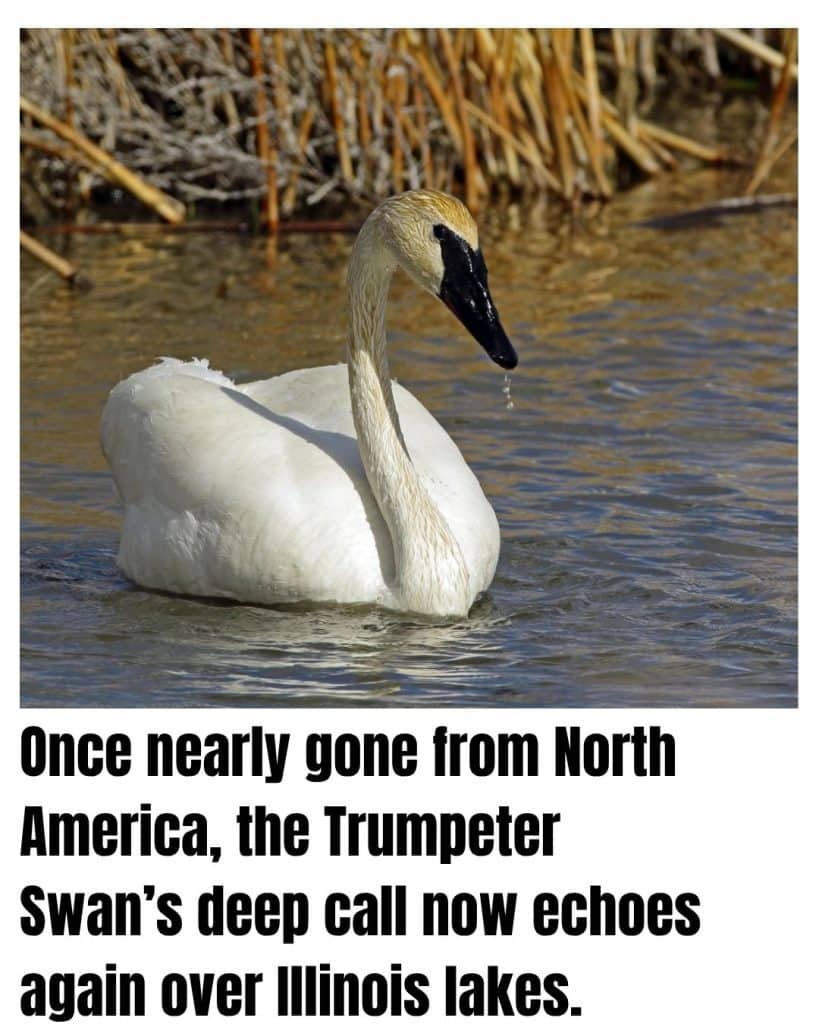
- When they show up: October through December
- Where they come from: Great Lakes and Canadian breeding zones
- Where they go: Northern and central Illinois lakes
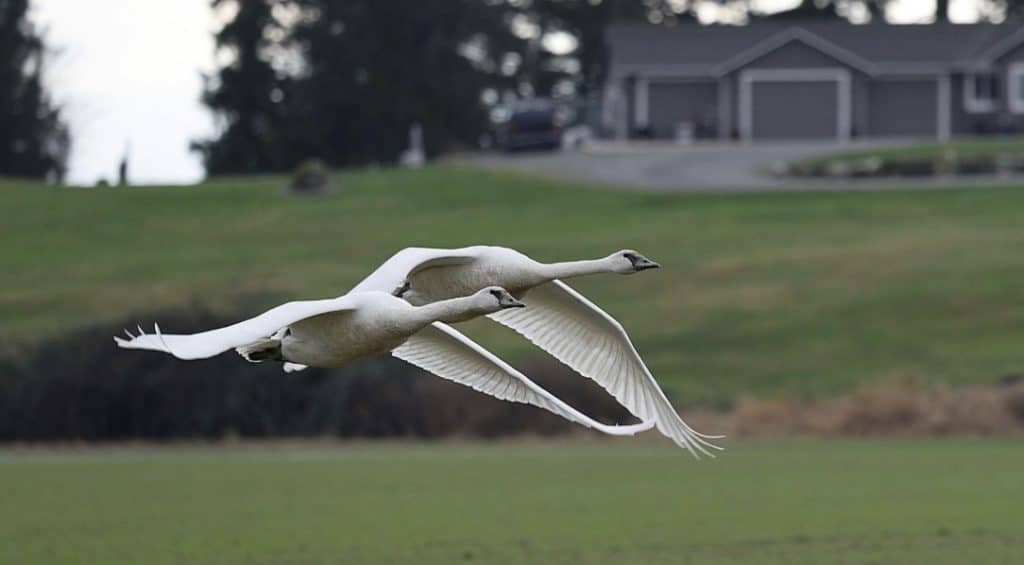
With a wingspan stretching up to eight feet, these massive birds arrive like floating royalty, gliding across icy ponds with calm authority.
Their haunting, trumpet-like voices carry for miles on crisp air. Once hunted to near extinction, careful reintroduction brought them back.
To see one lift off in a swirl of snow and sunlight feels like watching a comeback centuries in the making.
🦅 11. Rough-legged Hawk
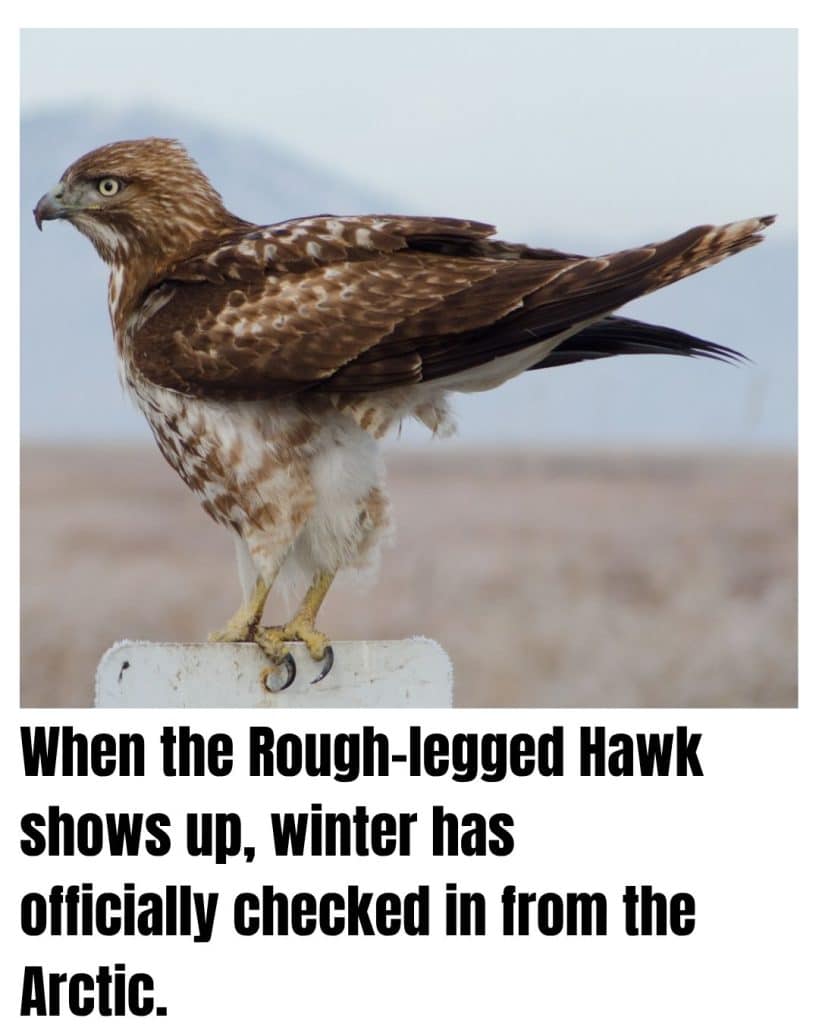
- When they show up: Late October through December
- Where they come from: Arctic tundra
- Where they go: Open farmland and prairies across Illinois
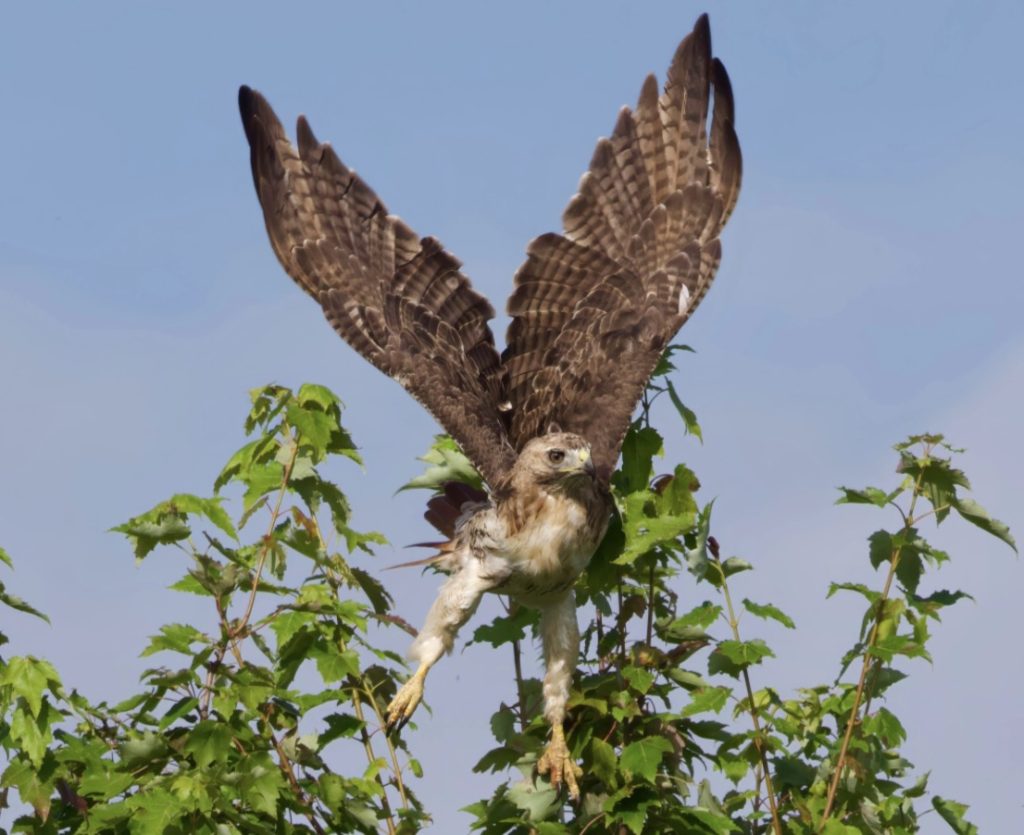
These big hawks sweep down from the frozen North, trading tundra for corn stubble and open prairie.
They hover motionless on the wind like kites—something few other hawks can do—before diving on unsuspecting mice.
Their feathered legs (a rarity among hawks) are built for bitter cold, and their dark belly band gives them a rugged, northern look. They carry a piece of the Arctic sky wherever they fly.
🦉 12. Short-eared Owl
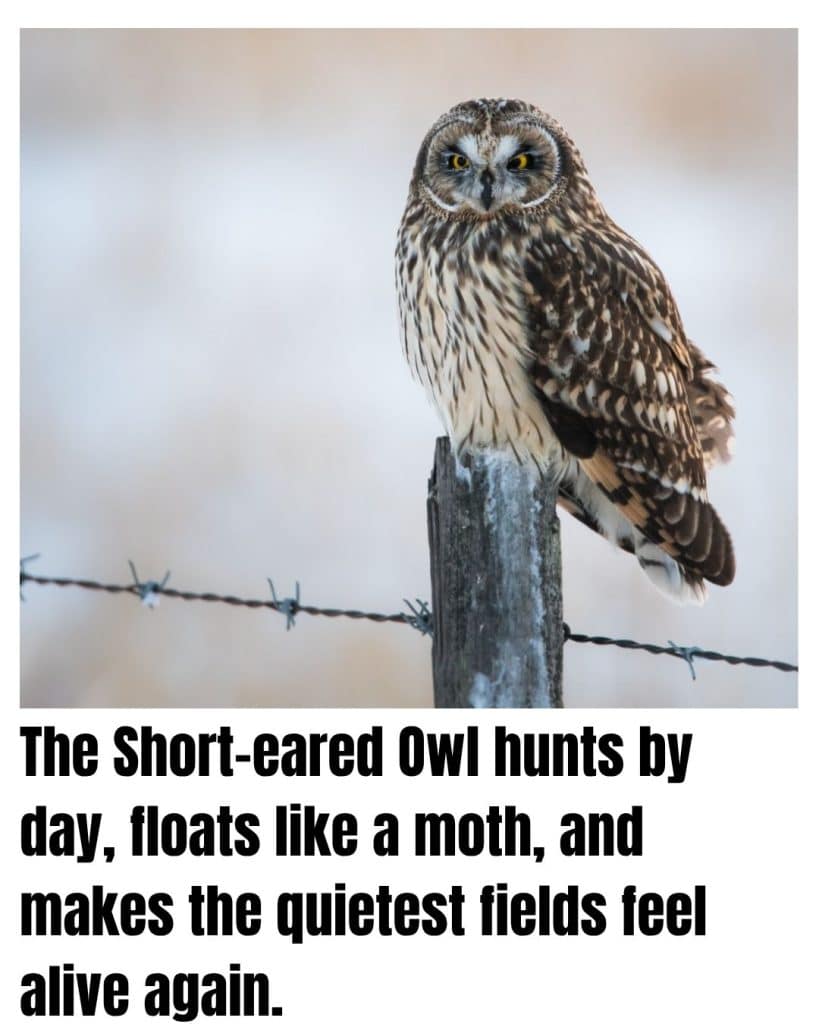
- When they show up: October through December
- Where they come from: Northern prairies and tundra
- Where they go: Marshes, grasslands, and airports
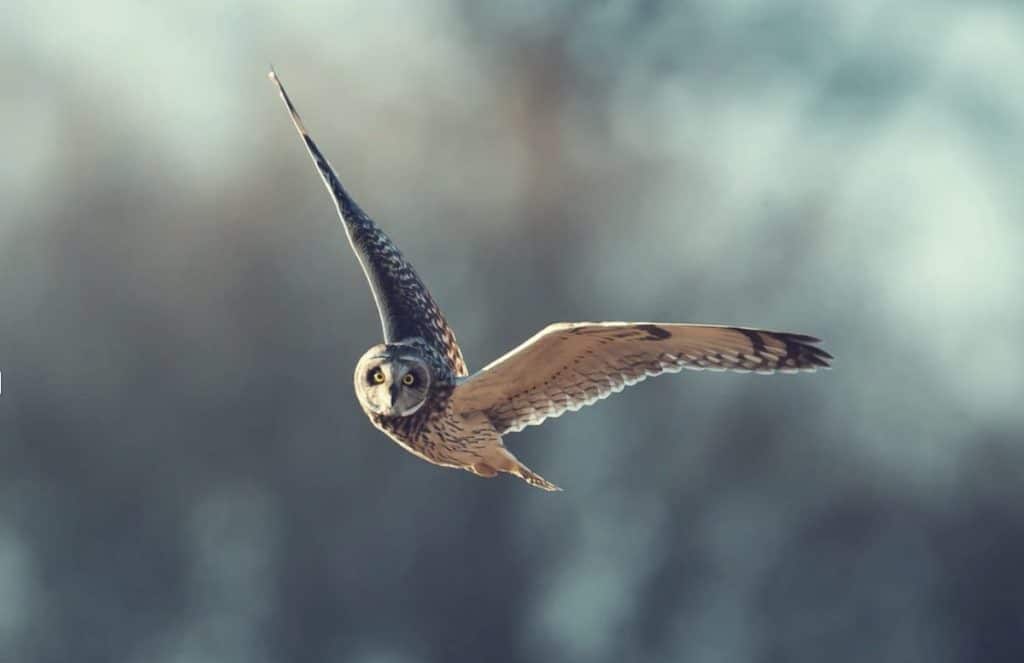
Unlike most owls, they love open country and sunlight. They drift low over Illinois fields, wings bending like soft cloth, pouncing on voles with silent precision.
Their yellow eyes blaze against pale faces as dusk falls over the prairie. When a cold front rolls in and you spot one quartering a field in daylight, you’re watching one of winter’s wildest gifts.
🕊️ 13. Sandhill Crane
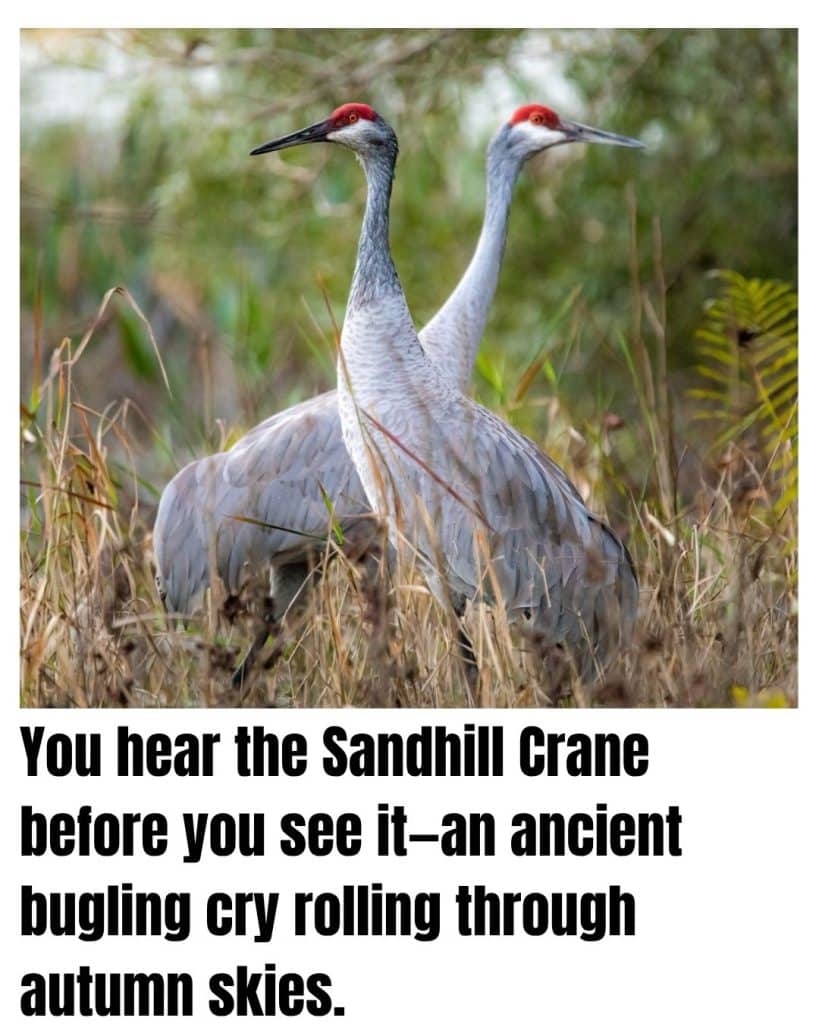
- When they show up: September to November
- Where they come from: Upper Midwest and Canada
- Where they go: Central and southern Illinois stopovers
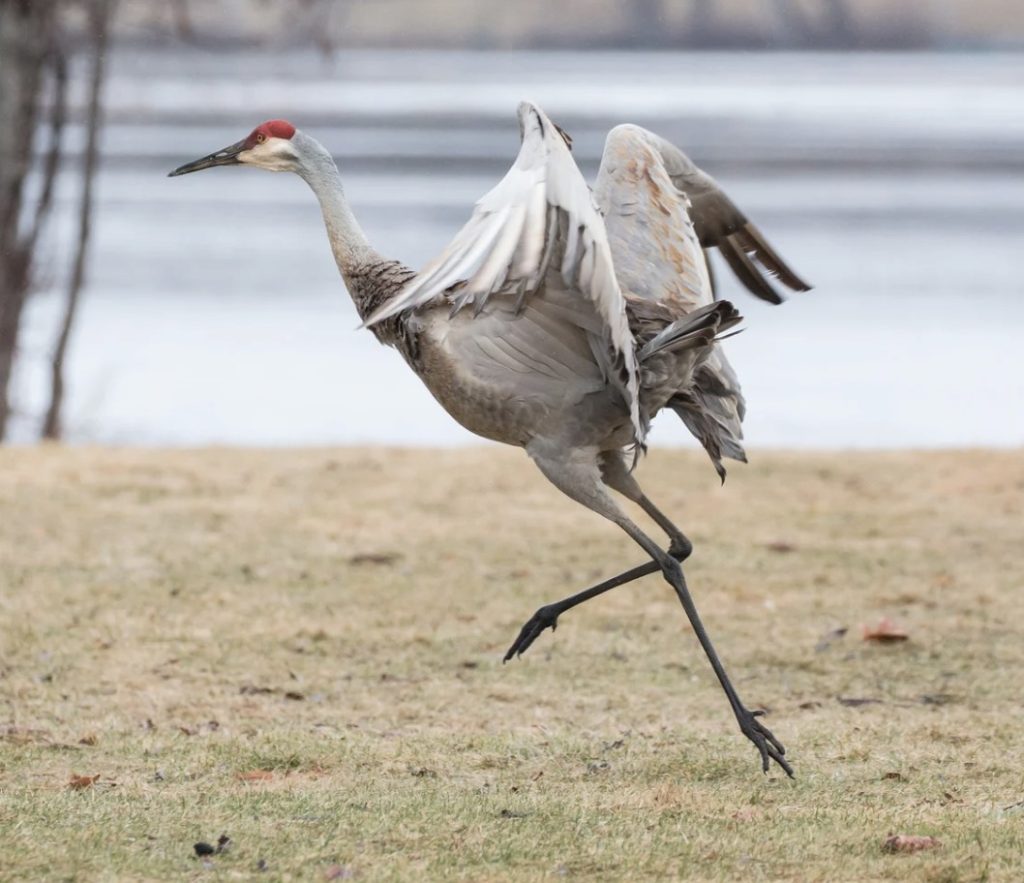
High above the cornfields, their long necks and outstretched wings trace gray Vs across the clouds, thousands strong.
They descend in great flocks at dusk, filling wetlands and stubble fields before continuing south.
Once nearly wiped out, their recovery is one of North America’s great success stories. When cranes pass overhead, fall migration feels timeless, primal, and deeply alive.
❄️ 14. Snow Bunting
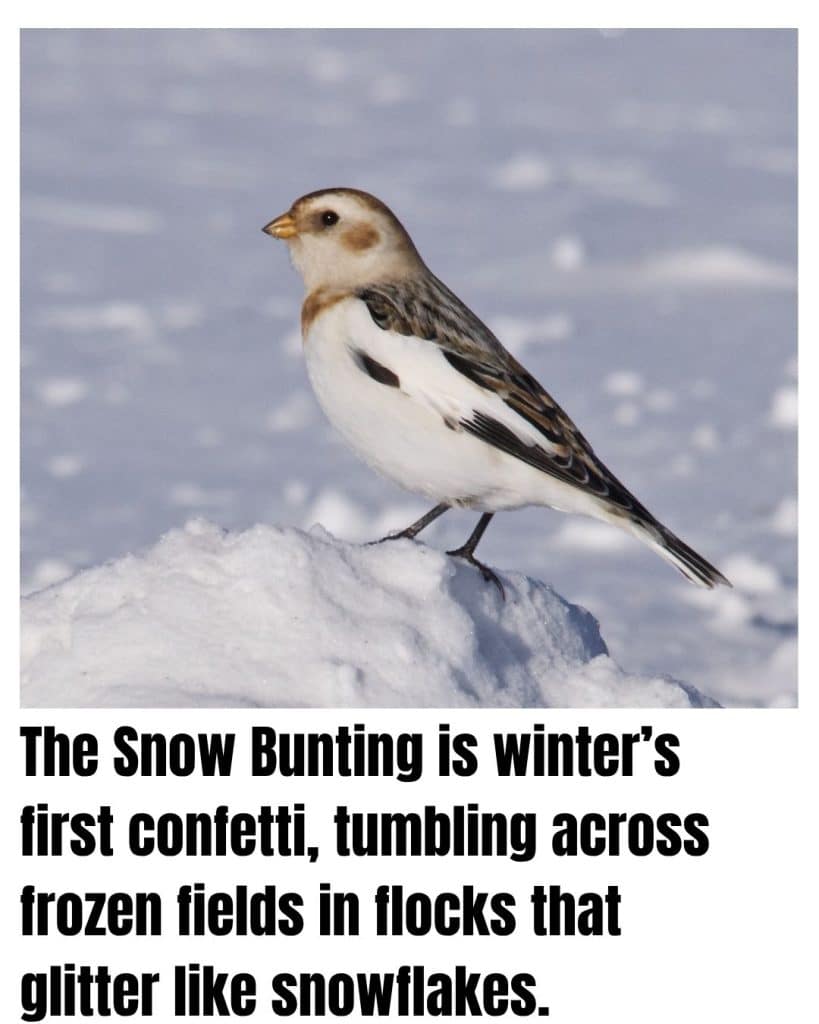
- When they show up: November
- Where they come from: Arctic tundra
- Where they go: Northern Illinois farmlands and lakefronts
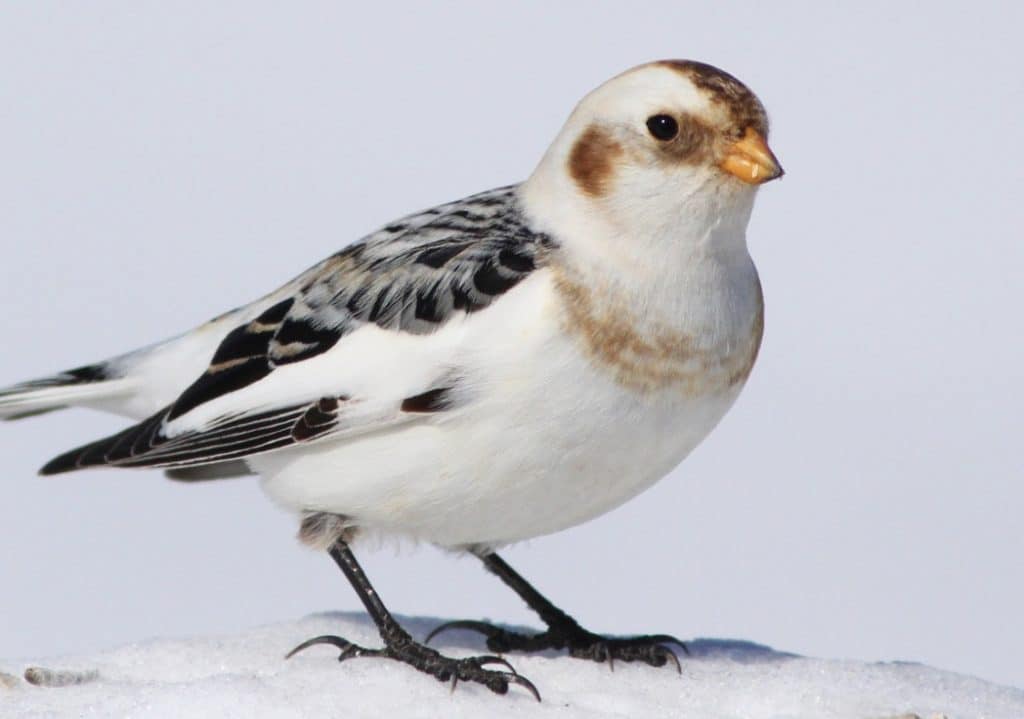
They arrive with the frost, pure white against brown fields and gray skies, feeding on seeds in the wind. Their rolling flight and soft chirps lend cheer to even the bleakest days.
Males stay brilliant white all winter, while females wear warm brown tones that blend with the earth. If you see them, you know true Arctic travelers have reached the Midwest.
🪺 15. Lapland Longspur
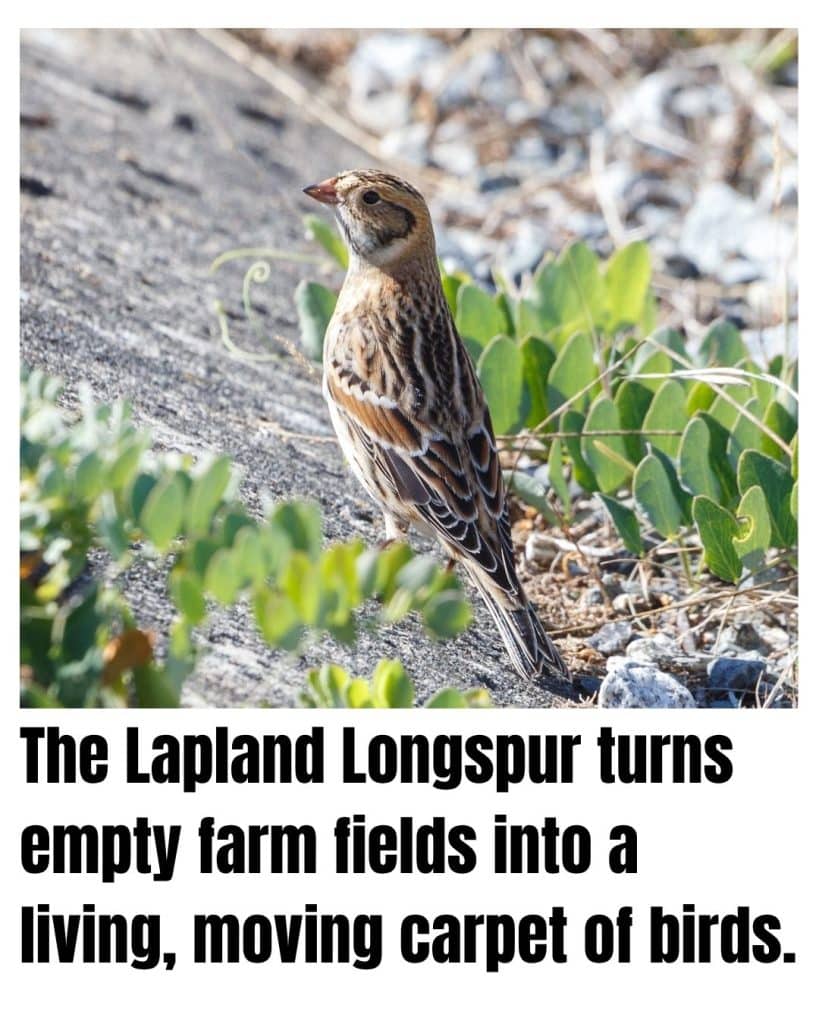
- When they show up: November to December
- Where they come from: High Arctic
- Where they go: Open farmland, plowed fields
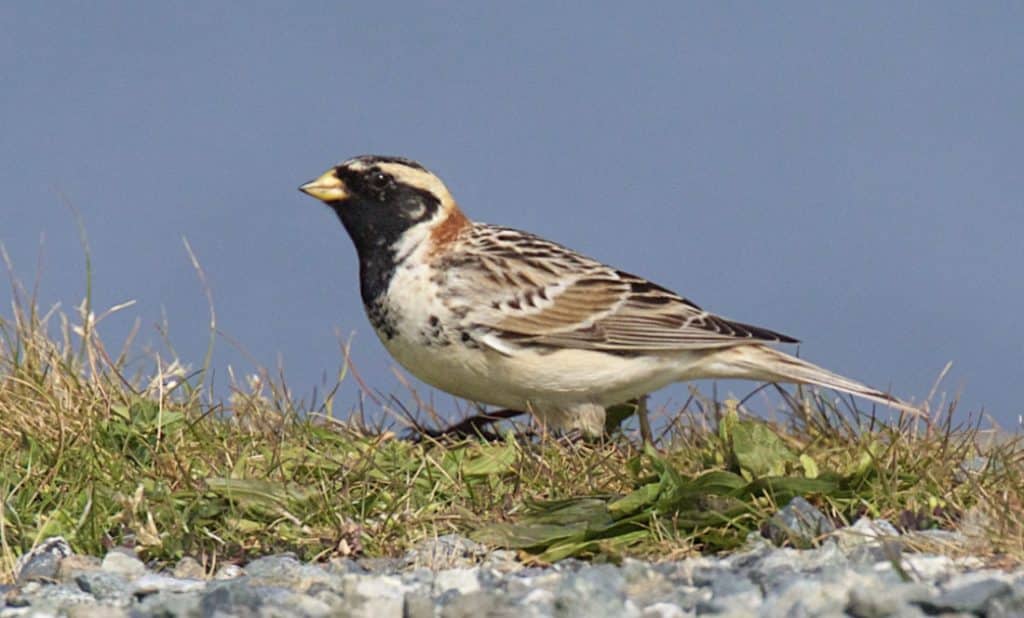
They arrive in restless flocks, mixing with Horned Larks and Snow Buntings across Illinois crop stubble.
In flight, their rattling calls sound like dried leaves skipping across frozen ground. Males wear bold chestnut and black breeding colors up north, but in winter they’re subdued—masters of camouflage.
They embody the quiet beauty of the prairie in its coldest season, thriving where few others dare.
🌾 16. Smith’s Longspur
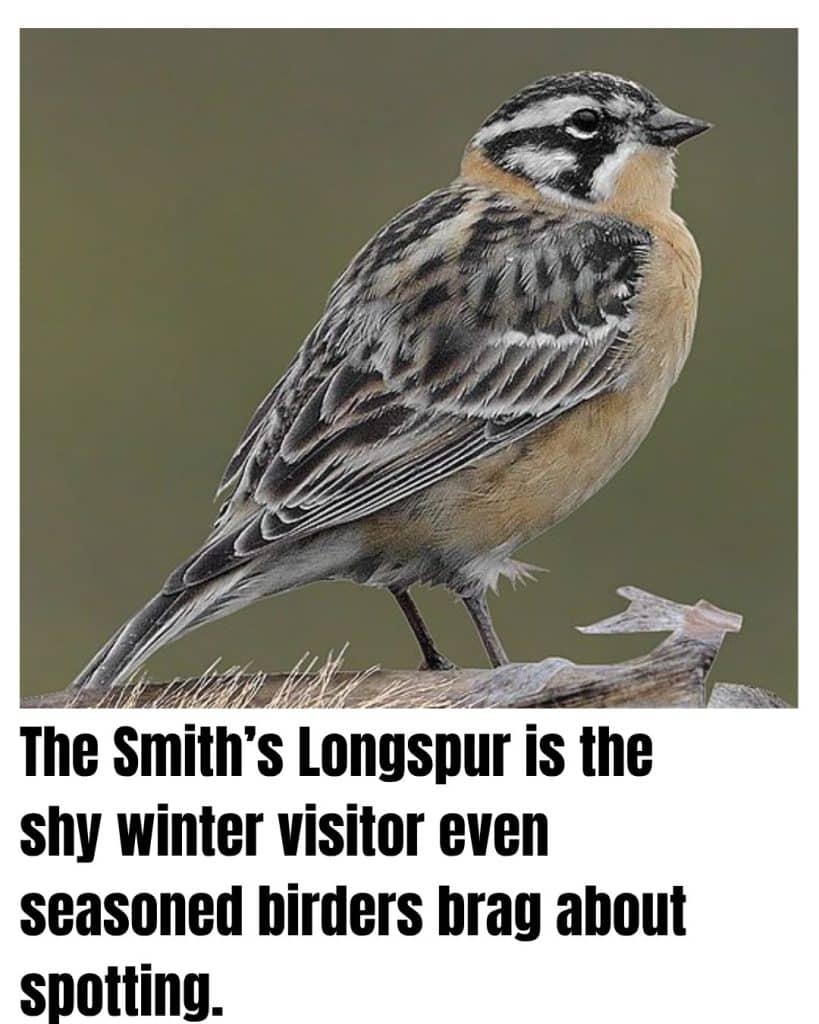
- When they show up: Late October through December
- Where they come from: Arctic Canada
- Where they go: Central Illinois prairies
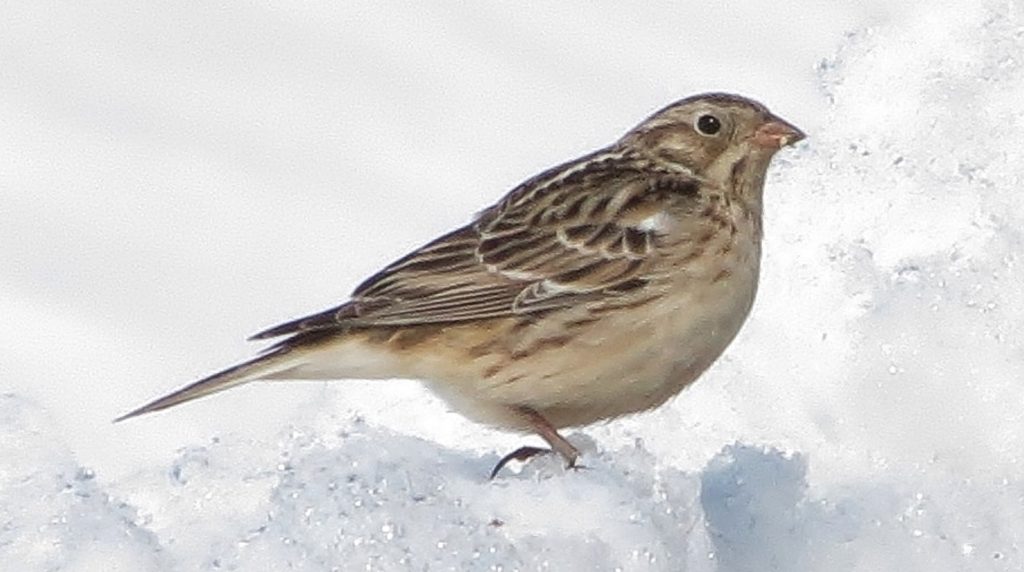
These elusive songbirds slip quietly into Illinois each fall, preferring open grasslands and prairies far from people.
They feed low to the ground, blending perfectly with dried grasses until startled into flight. Their soft, tinkling calls are almost musical, like sleigh bells in the wind.
While their Arctic breeding grounds are wild and harsh, Illinois’ windswept fields offer them a gentle refuge from the deep freeze.
🪶 17. Yellow-bellied Sapsucker
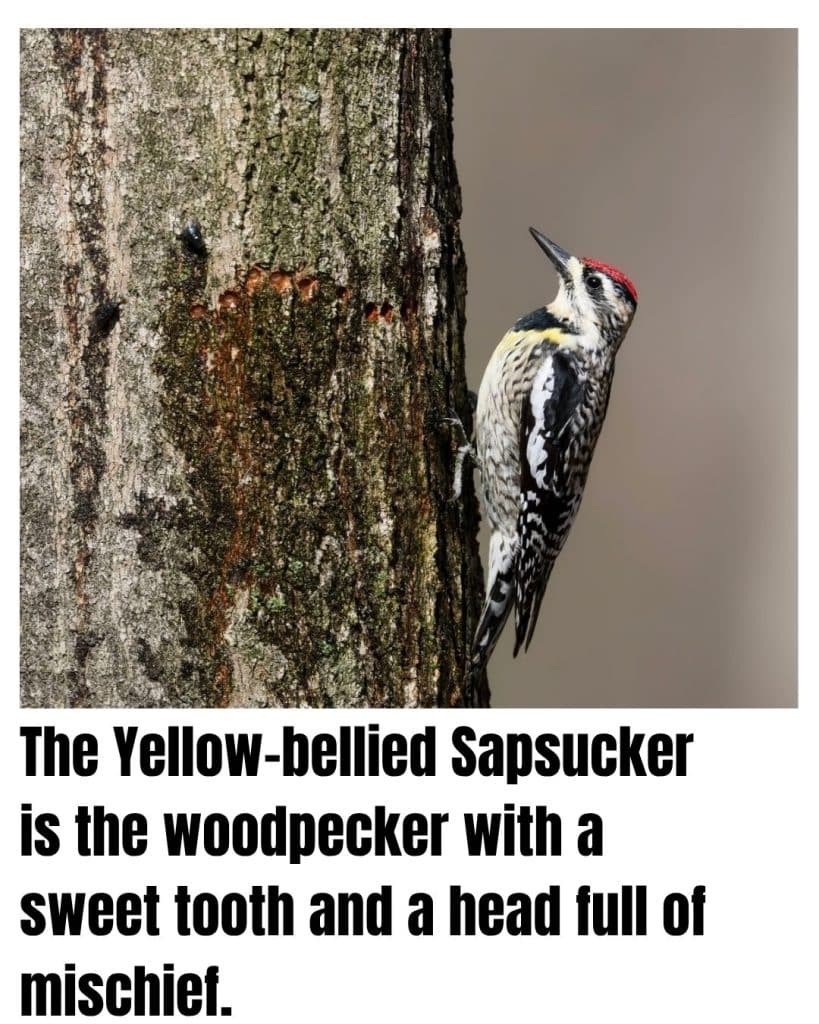
- When they show up: September through November
- Where they come from: Northern U.S. and Canada
- Where they go: Southern Illinois and beyond
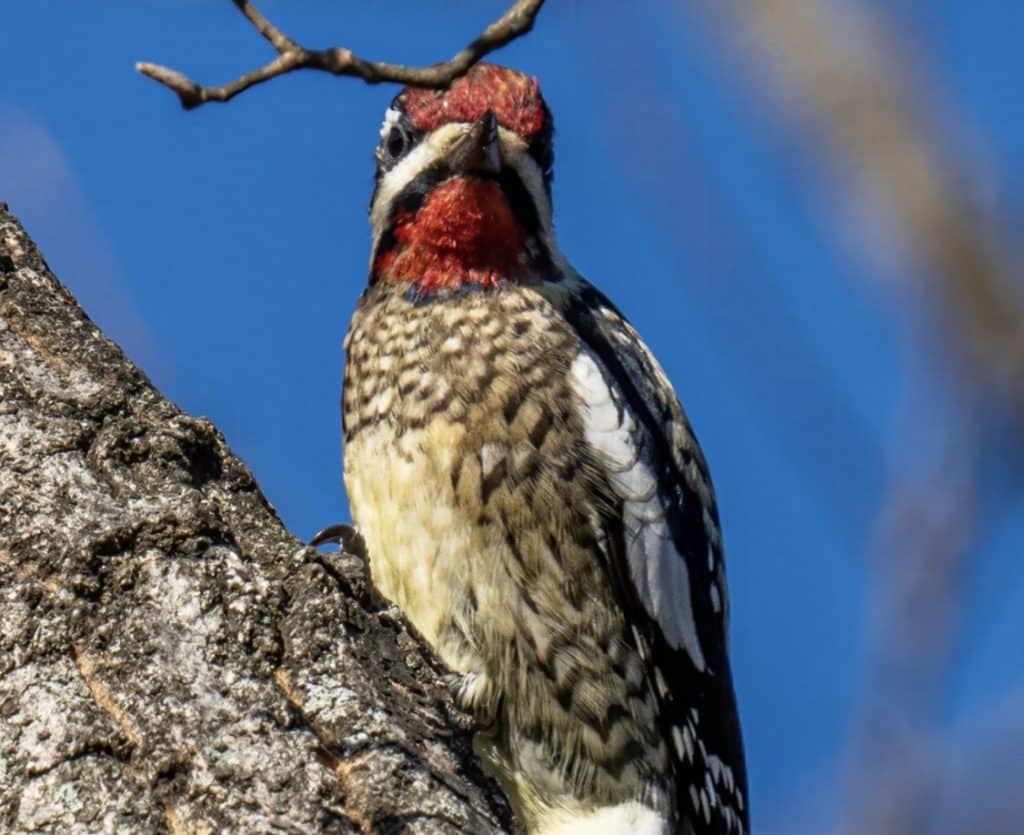
These migratory birds drill neat, tidy rows of holes into tree bark to sip sap and catch insects drawn to it.
Their rhythmic tapping gives away their presence long before you spot their red crowns and bold black-and-white faces.
Though their name sounds made up, they’re very real—and quite entertaining. Watch one at work, and you’ll see a bird that’s both meticulous and mischievous.
🌲 18. Rusty Blackbird
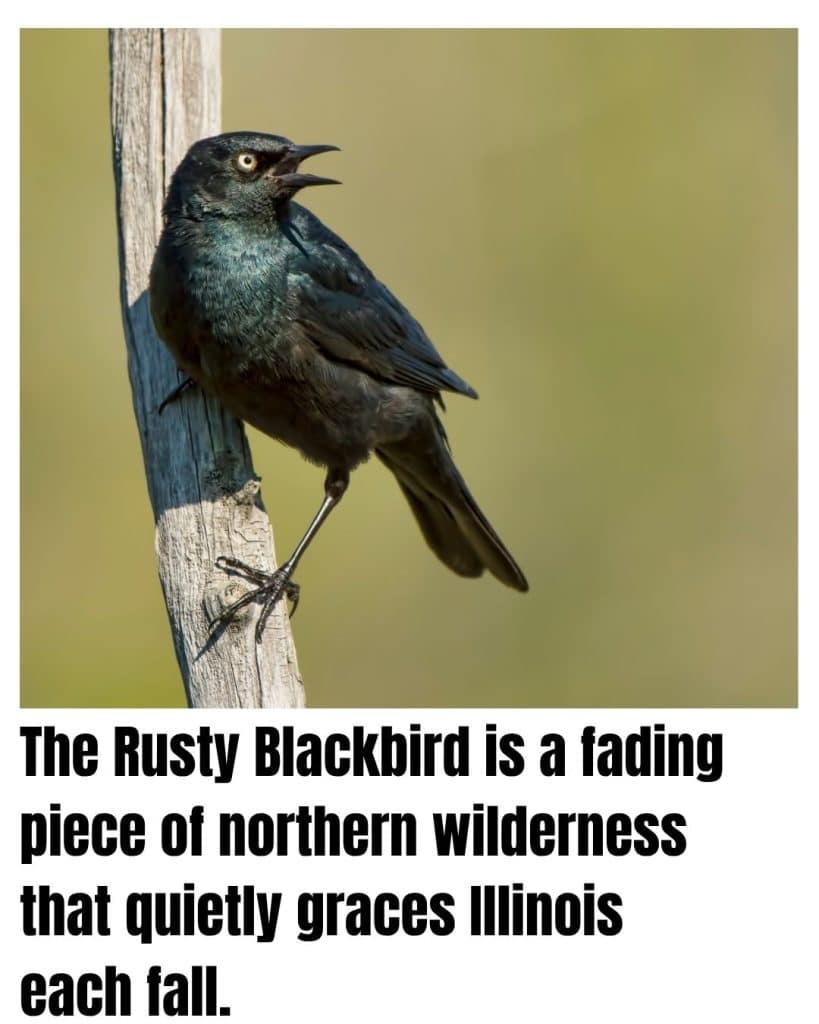
- When they show up: October through November
- Where they come from: Northern boreal swamps
- Where they go: Floodplains, wet woods, and river edges
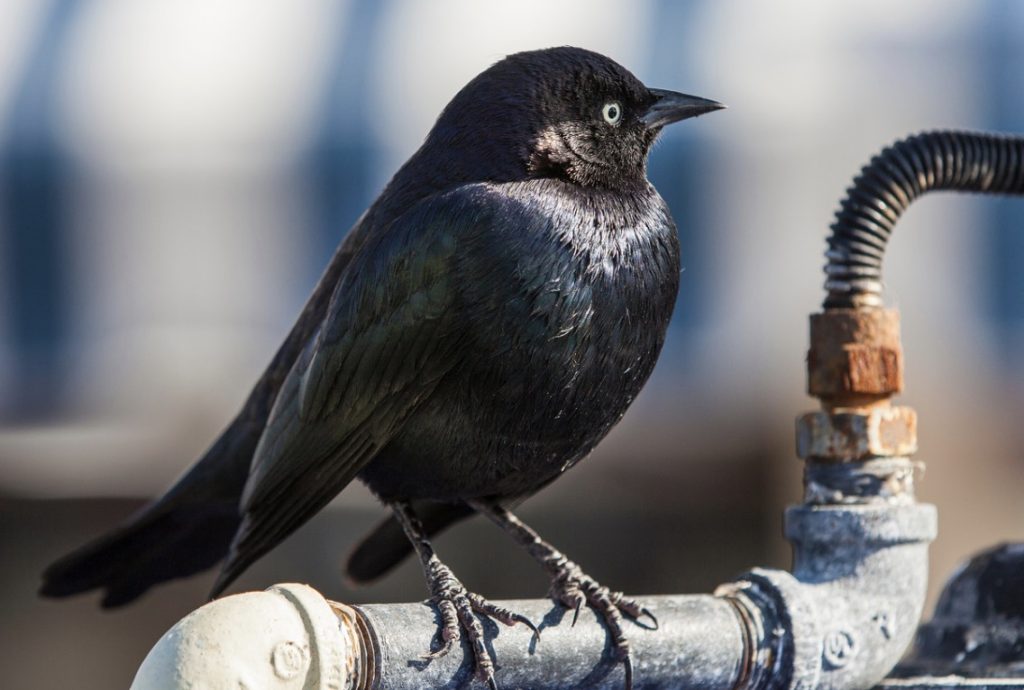
Once abundant, their numbers have dropped by over 90%, making every sighting a small triumph. They appear in loose flocks, their feathers glinting bronze and copper in low autumn light as they probe muddy shallows for food.
Unlike their louder cousins, these birds move in eerie silence, as if aware of their fragile legacy. When one lands nearby, it feels like a rare whisper from a vanishing world.
🦅 19. Golden Eagle (northern breeders)
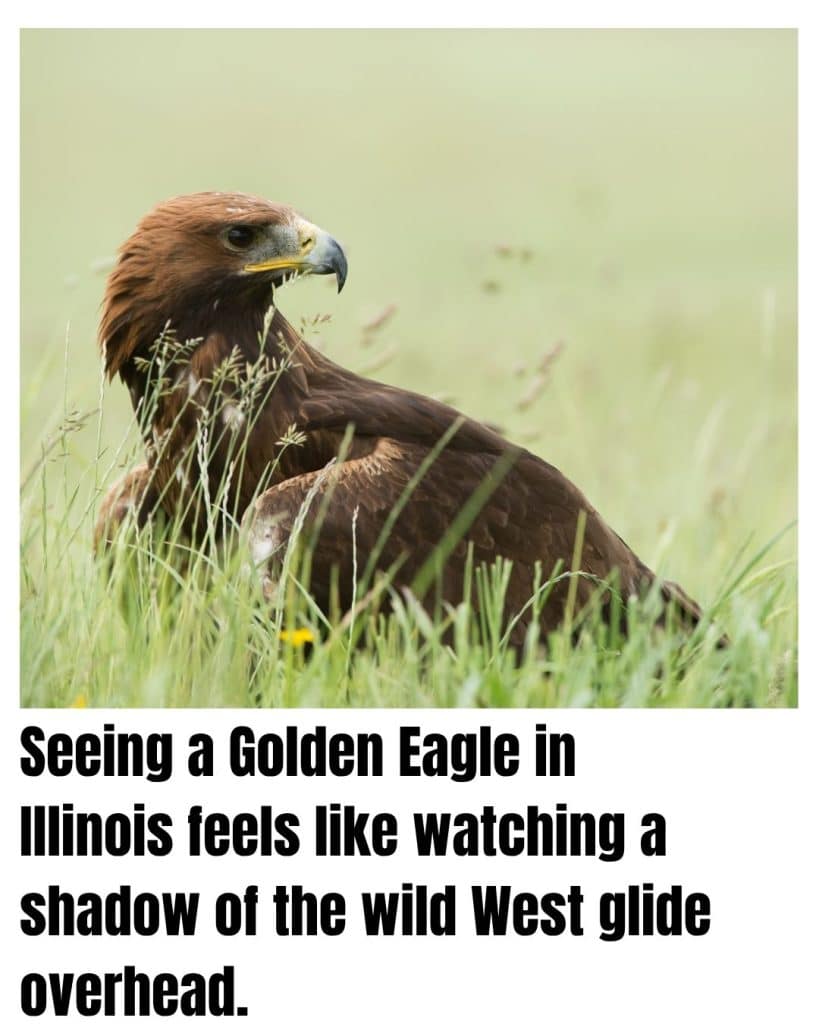
- When they show up: November
- Where they come from: Canada and northern U.S. mountains
- Where they go: Mississippi River bluffs and open country
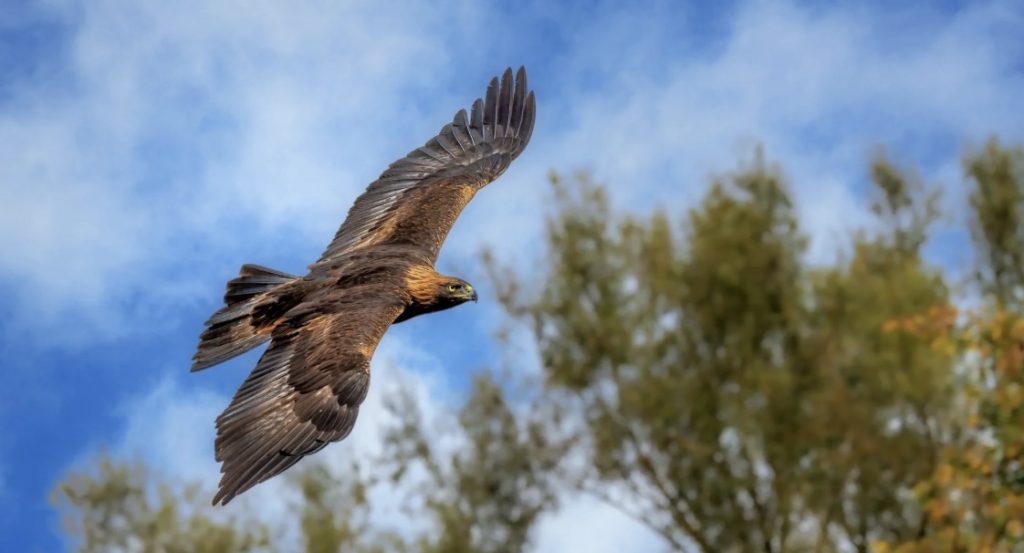
They ride updrafts along river bluffs, massive and majestic, with wings wider than a man is tall. Though rare, a few spend winters hunting rabbits and waterfowl in open country along the Mississippi.
Their golden napes glow when sunlight hits just right—a flash of regality against a gray November sky. Spotting one is a heart-stopping moment you never forget.
🌾 20. Horned Lark
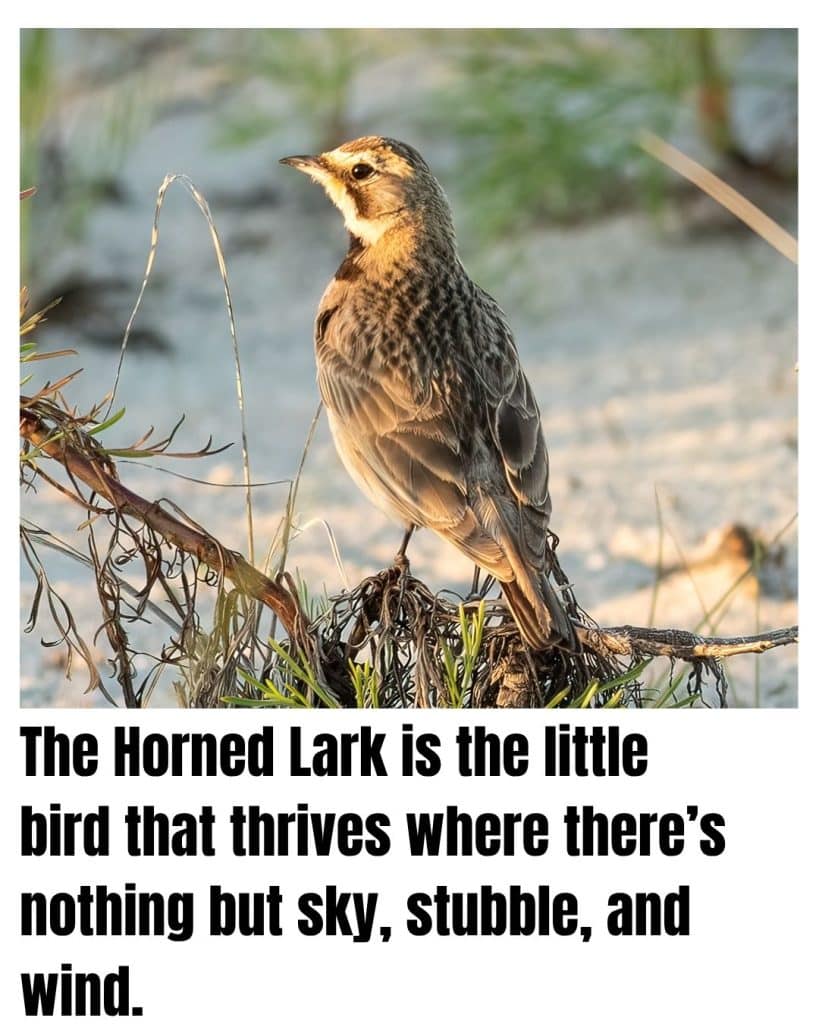
- When they show up: Year-round but increase in fall
- Where they come from: Local and northern populations
- Where they go: Open farmland and grasslands statewide
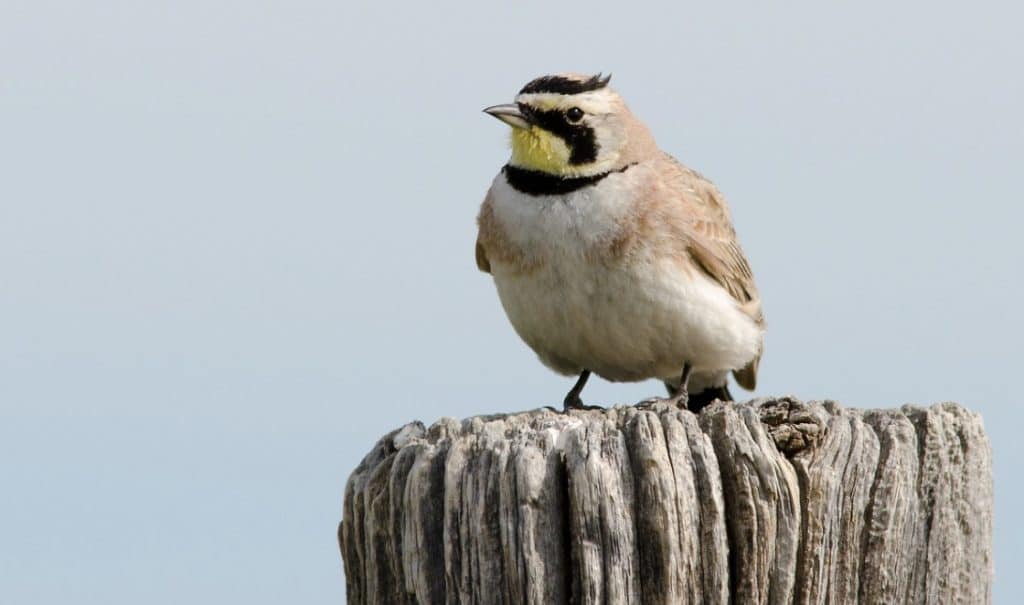
They’re the earliest risers of the prairie, singing bright tinkling songs from frozen ground long before sunrise.
Males sport tiny black “horns” of feathers that give them their name, and they gather in mixed flocks with longspurs and buntings as fall deepens.
Hardy and unbothered by cold, they remain when nearly everything else has fled. In the emptiness of an Illinois winter field, they’re proof that life endures.
By the time the first snow falls, these travelers have found their winter homes among us. They bring motion and melody to frozen mornings, from sparrows scratching in the leaves to cranes circling overhead.
When you spot one, remember—you’re seeing part of a centuries-old rhythm still unfolding. The next time a “snowbird” lands in your yard, you’re not just watching migration—you’re witnessing survival in its most graceful form.